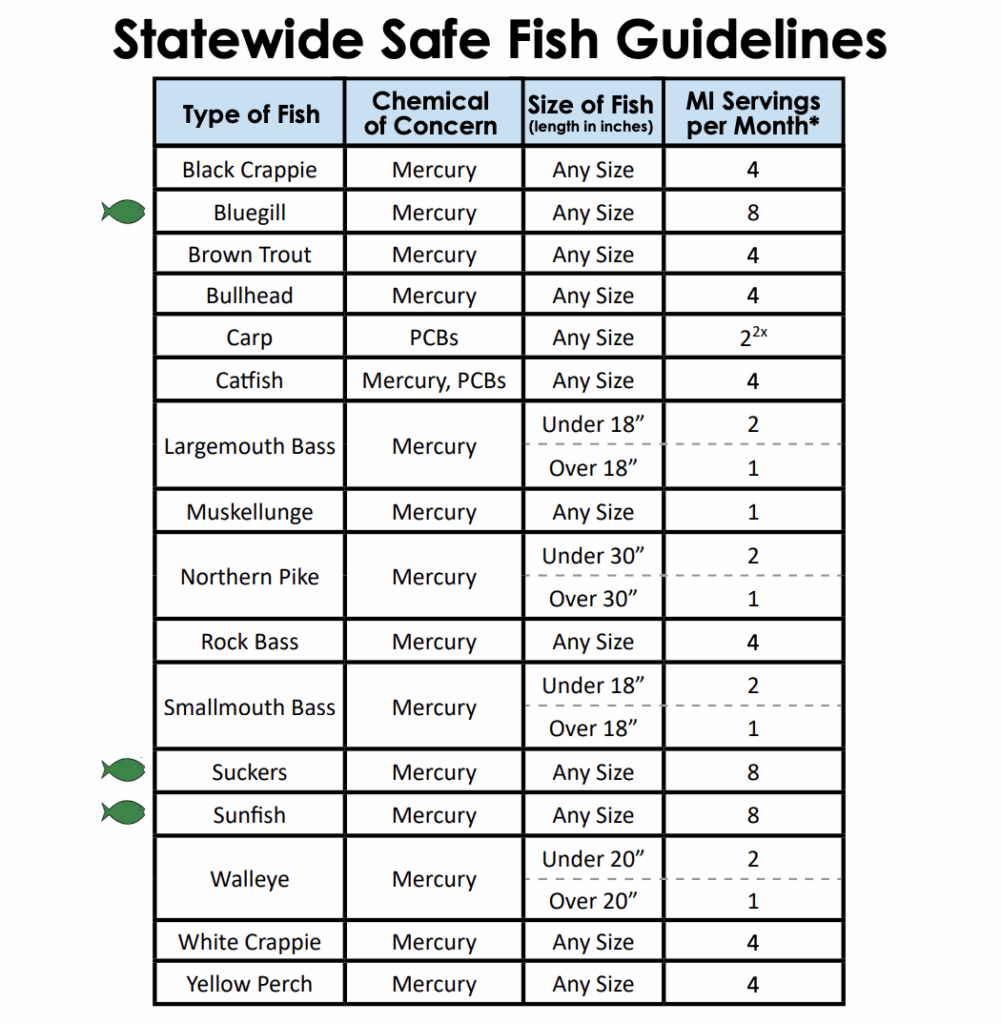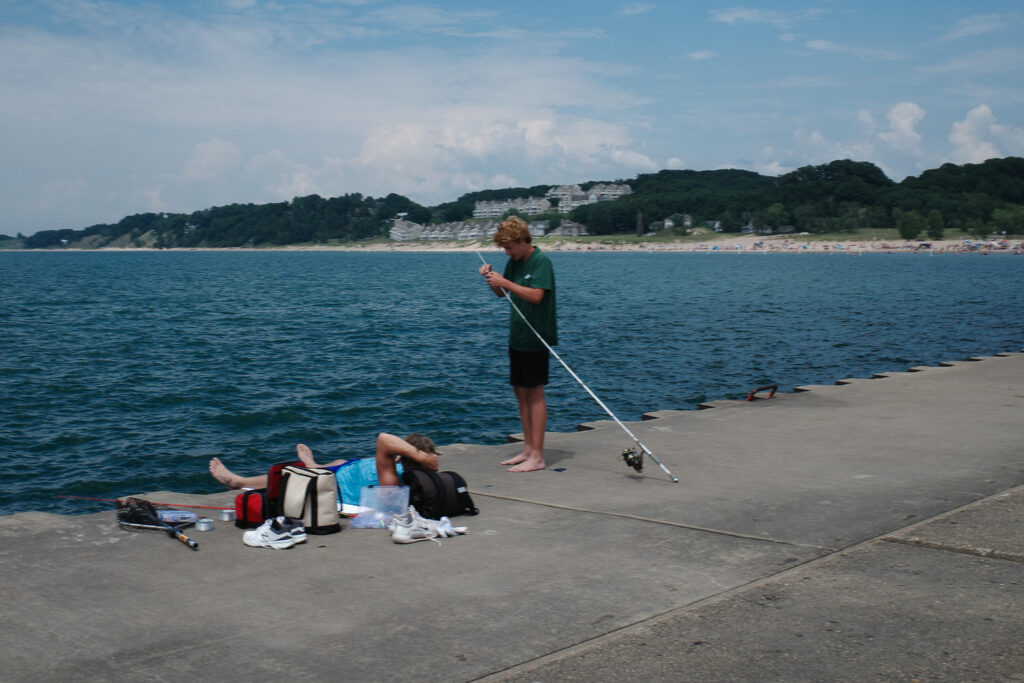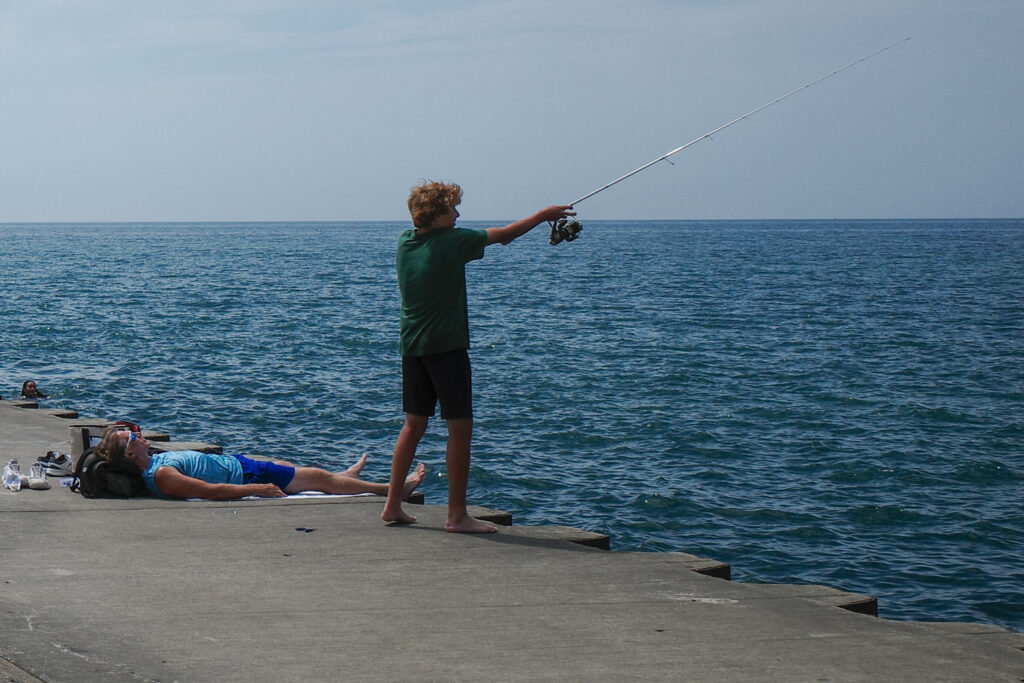When I first looked at the Michigan Eat Safe Fish Guides, I was shocked. How safe fish are depends on a lot of factors, including species, fish size, and the area where they were caught. But in general, the state recommendations on fish consumption are low.
One serving of fish is 8 ounces for a 180-pound person. That’s not a lot of fish. You probably eat two or three times that at a fish fry.
The state guidelines are highly variable, but the most fish you can eat per month is about eight servings of bluegill. That’s only two servings of bluegill a week! And bluegill is one of the safest species. If you want to eat a walleye over 20 inches, then the state says you should only do it once a month.

Unfortunately, it only gets worse in some regions. Almost every fish from Lake Erie is limited. Limited means you can only eat a portion of fish one to two times a year, assuming you are above 15 years old, have no health problems, and do not plan to be pregnant or breastfeeding soon.
Why is the Michigan government so stingy with the amount of fish they recommend people eat? Well, the concern isn’t unfounded. There has been a lot of industry on the Great Lakes for over 100 years, and the pollution has added up. The biggest concerns are cancer causing chemicals like PFAS and PCBs, along with mercury.
All fish are going to have some level of these chemicals, but bigger fish are more dangerous. This is due to the process known as bioaccumulation. Chemicals, whatever they may be, enter a waterway through a factory, farm runoff, dumping site, or another source. Those chemicals are absorbed by the smallest link of the food chain, such as small fish feasting on plankton.
These fish are in turn eaten by bigger fish, which are eaten by even bigger fish. Because the species at the top of the food chain must eat more of the fish at the bottom of the chain to survive, they absorb the chemicals of all of the smaller fish they eat. Even in a system with a low concentration of chemicals, fish higher up on the food chain can absorb lots and lots of chemicals, even to a point that can cause health problems.
While we could spend a long time looking at all the different chemicals flagged by the state of Michigan, I want to look at PFAS, a group of chemicals used in many things, like nonstick cookware, carpets, fabrics, and firefighting foam. They are known as “forever chemicals” because they do not degrade in the natural environment.
Due to our industrial history, Michigan has lots of PFAS, which are listed as carcinogenic by the American Cancer Society. These levels are way higher than the EPA would allow in municipal water sources and could potentially cause health problems if eaten in large quantities.
This is especially dangerous because PFAS bioaccumulates in us too. If someone eats PFAS-laden fish one time, it may not be a problem. But do it over and over again, and the levels will rise in their body until the effects become more pronounced over a period of years.

So fish from Michigan just shouldn’t be eaten, right? Would it be wise for use to stop fishing completely? Not quite.
The levels of contamination in the Great Lakes are very high, but that doesn’t mean we can’t all eat fish. The key to eating healthy fish is to think small, in location and size. When looking at the restrictions for different regions of Michigan, one thing that consistently shows up is that smaller lakes and rivers are going to be healthier than larger bodies of water.
The stream that runs behind the family cabin is going to have safer fish than Lake St. Clair. There are exceptions, of course. If a stream flows past a giant manufacturing plant, then it probably isn’t safe either. But in general, more remote bodies of water with smaller watersheds are going to be much safer to eat from.
You could also just pick smaller fish species to eat. You can eat more perch, rock bass, bluegill, brook trout, and smelt than walleye, carp, bass, and salmon. Leave the big fish for a special occasion, and you’ll be OK.
You can also remove a lot of potential chemicals by getting rid of excess fat on the fish you eat. PFAS and other chemicals are often stored in the fat of a fish, so trimming of the fat gets rid of a lot of the chemical load. Another tip to doing this is cooking the fish on a grill, allowing extra fat to drip out of the fish, as opposed to frying, which keeps it in the meat.
We live in a world full of chemicals and pollutants. We can’t avoid them, no matter what we do. But by taking a few precautions, there are still plenty of ways to enjoy eating the bounty of the Great Lakes.
Jack Ducote is a writer who loves fishing, hunting, the outdoors, and of course, Michigan. He writes under Hemlock Hobo on Substack.



